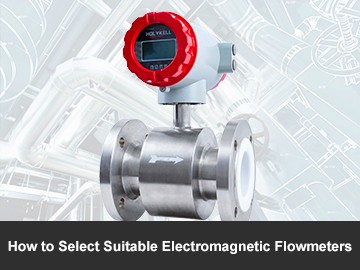Generally, we recommend you to choose a suitable electromagnetic flow meter according to the following aspects:
1.Material compatibility
2.Flow rate range
3.Pipe size
4.Accuracy requirements
5.Environmental conditions
6.Other aspects that are necessary for your application.
We will explain step by step in the following.
Abstract
Selecting the right magnetic flow meter is essential to ensure accurate and reliable flow measurements.
Before the selection of magnetic flow meter, we need have a simple knowledge about the strucure of electromagnetic flow meters. Learn how electromagnetic flow meters work will help us have a better understanding of this product. Generally it consists of 4 parts, electrode, liner, sensor and transmitter. There are 2 basic wetted parts. You know one of them is the liner and the other is the electrode. They can be made of different materials based on different applications. Besides, there are various types of magnetic flow meters on the market in terms of their transmitter.
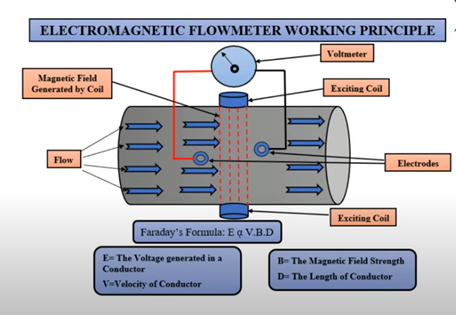
In conclusion, it takes 5 steps to choose the right magnetic flow meters.
5 Steps to Choose A Suitable Electromagnetic Flow Meter
You can also refer to the video for a rough idea on electromagnetic flow meters.
Step 1: Material compatibility
Consider the type of liquid that will be flowing through the meter and ensure that that the liquid must be conductive and cannot be lower than the threshold, and the meter is made of a material that is compatible with the liquid. For example, if the liquid is corrosive, we should choose a meter made of a corrosion-resistant material.
The main wetted parts, liner and electrode, should be made of suitable material based on the application.
Different liners are available for different medium to be measure, like soft rubber, hard rubber, neophene, polyrethane or PTFE. The price of different liner varies. The price of these 5 materials varies, if to measure water, as the first 3 are at relatively low cost, you don’t have high levels of chemical compatibility that you have to worry about, there is no reason that you can’t go with the relatively low cost and economical design.
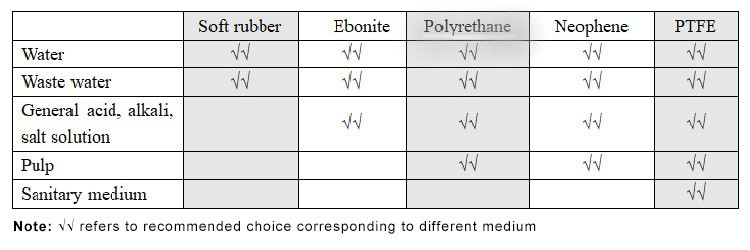
Choosing the suitable electrode for an electromagnetic flowmeter is also important, as it also decides the price and application. Usually stainless steel or Hastelloy is mostly used. The former one, usually for general purpose but is not suitable for strong acids and alkali, not recommended for salt water and brine. For Hastelloy, it has good all-round corrosion resistance, higher resistance to locallized corrosion,which is superior to stainless steel.
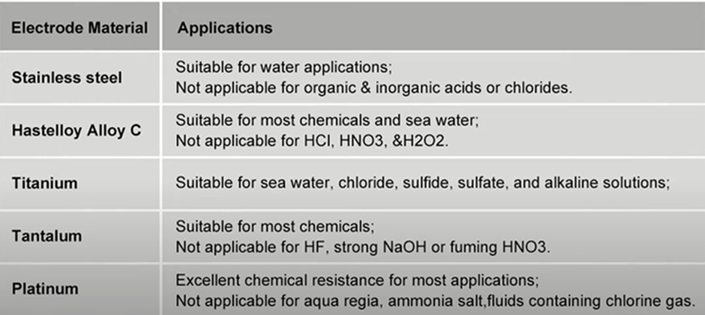
For more details about how to select the liner and electrode materials, refer to Corrosion Resistant Material Selection List for Electrodes and Liners
Step 2: Flow rate range Consider the range of flow rates you need to measure, and choose a meter with an appropriate range. Make sure the meter is capable of measuring both high and low flow rates, if necessary.
Step 3: Pipe size Ensure that the meter is compatible with the size of the pipe it will be installed in. Choose a meter with a diameter that matches the pipe size, or choose a meter that can be adapted to fit the pipe.
Step 4: Accuracy requirements Determine the level of accuracy required for your application and choose a meter that can provide the necessary level of accuracy. Keep in mind that higher accuracy meters may be more expensive.
Step 5: Environmental conditions Consider the environmental conditions where the meter will be installed. If the meter will be exposed to extreme temperatures, choose a meter that can operate in those conditions. If the meter will be exposed to moisture or other harsh conditions, choose a meter that is designed to withstand those conditions. For example, the electromagnetic water flow meters used in the channels are submersible, mainly in industrial drainage and sewers. Its sensor are generally installed under the baffle of the open channel and immersed in the water for a long time. Therefore, the related IP rating should be met. In some special occasions, such as flammable occasions, a magnetic flow meter with explosion-proof performance is required.
Additional factors: Consider any additional features that may be necessary for your application, such as data logging or remote communication capabilities. Make sure the meter you choose has the features you need.
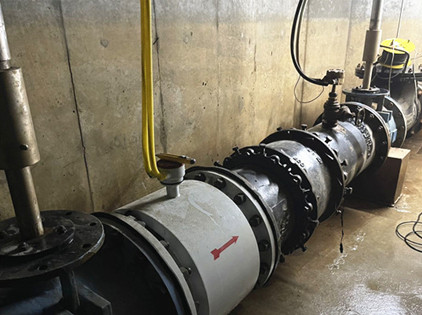
Have you got your ideal magnetic flow meter?
Have you decided the key factors for your magnetic flow meter?It must for sure the one most suitable to your specific application. Wrong type or materials chosen will definitely affect your process and waste your money. If there are still questions, you can contact our engineers for help.
During the selection, or use of the product, did you face any problems? You can tell us or read more articles below about magnetic flow meter selection in different industrial applications.
●Electromagnetic Flow Meter for Coconut Milk Monitoring
●Electromagnetic Water Flow Meter Used in Wastewater in Oil Production
●Electromagnetic Flow Meter for Chemical Industry
●Electromagnetic flowmeters are used on oil RIGS
●Electromagnetic Flow Meter Used in Chlor-Alkali Measurement
For example, if we use it for city sewage measurement, we generally recommend rubber liner and stainless steel electrode considering the price. And keep in mind that the proper installation, maintenance is also important to guarantee the measurement effect.
FAQs about Electromagnetic Flow Meter
1. How do I use an electromagnetic flow meter effectively?
Electromagnetic flow meter is one of the powerful instrument in the industry and you can obtain the best possible result. They are very versatile in terms of the range of flow rates under which they can operate.
Check the manufacturer’s instruction while installing the flow meter because electrical grounding is essential to the operation of an electromagnetic flow meter, so please follow very carefully when installing it. Take care of temperature and pressure ranges to which the flow meter may be exposed.
When selecting the size of your electromagnetic flow meter, go for one that’s designed for a flow rate of something like 60% of the maximum flow rate of the pipe size used.

2. What is the sizing of electromagnetic flow meter?
Most electromagnetic flowmeters feature a meter size of 15 to 200 millimetres and a velocity range between 0.3 to 10 meters per second. The larger a flowmeter's size, the higher its velocity capacity and the greater the flow rate it can measure.
Related questions
1. What are the different types of electromagnetic flow meter?
The three common types of electromagnetic flow meters are insertion, in-line, and low flow.
2. Where is electromagnetic flow meter used?
Magnetic flow meters are used in water treatment plants to measure treated and untreated sewage, process water, water, and chemicals. Mining and mineral process industry applications include process water and process slurry flows and heavy media flows.
3. Is a magnetic flow meter better than a mechanical flow meter?
Magnetic flow meters are superior to mechanical flow meters because they don't impede flow, don't become clogged with solids and have no moving parts to maintain or replace.

